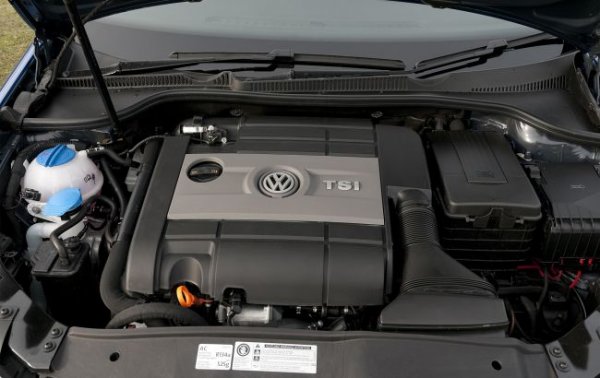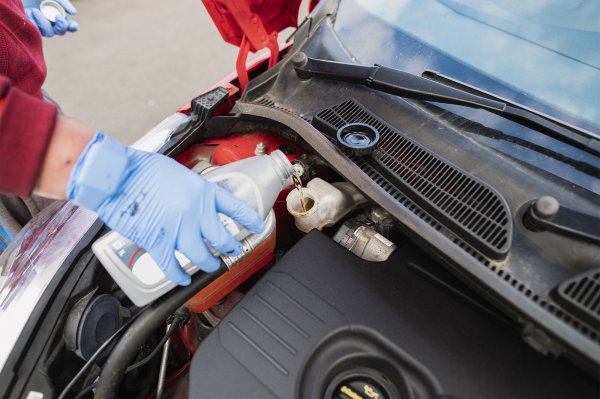
Photo: The best color of antifreeze for your car (Getty Images) Author: Konstantin Shirokun
The easiest way to select antifreeze is also the most reliable way to harm your own engine. Why did manufacturers actually come up with the idea of painting antifreezes, and how to choose the right one?
Read about the criteria by which you should choose antifreeze for your car in the RBC-Ukraine article.
Let's say right away that the question of which antifreeze is better is incorrect in itself. There is no better or worse antifreeze, there is a cooling liquid that is suitable or not suitable for your car model. Although there are some nuances – even among those liquids that are suitable for you.
What does the color of antifreeze mean?
By and large, nothing. Given that probably at least half of drivers buy antifreeze based on the principle: “Give me the red one, I used to have that one.”
The coolant itself is transparent. Its color is determined only by the dye that the manufacturer of auto chemicals adds purely for marketing or design reasons. Antifreeze of the same composition can be blue (designers consider this color “authoritative” and strict), red (to look like the famous “Volkswagen” type G12), green (to call it environmentally friendly), yellow (because the manufacturer already uses the other available colors for its other grades).
At the same time, within antifreezes from a single manufacturer or in a group intended for a single brand of car, colors mean different specific types of liquids. We will talk about them below.

How to choose antifreeze for your car
You probably already understood that color is not a determining factor. Antifreeze should not correspond to fashionable colors or super-advanced technologies, but first of all to the materials used in the engine cooling system – that is, the recommendations of the car manufacturer. And the newest products by the time of their release on the market, such as the for some reason very popular G12 or G12+ liquids created for Volkswagen cars, will not always be useful for a 15-year-old car.
It is also wrong to choose a coolant by name – such as TOSOL, “Antifreeze”, G12, Opet, Liqui Moly – because this is either a general name for antifreeze liquids or one of the trademarks or just an internal code of one of the European companies. Note that the brand does matter (more on this below), but in the catalogs of one brand there is a whole list of liquids, of which only one or two may be suitable for your engine.
So which antifreeze should you choose?
The best way is to look in the car's factory manual (or ask the dealer) for the car manufacturer's official recommendations on the type of fluid for your model. These may be links to a specific antifreeze of a specific brand, as well as the car manufacturer's proprietary regulation (recommendation) code – which you should then look for on the bottles on the shelves of the auto chemical store.
When you can’t find the same liquid, you need to find out what type it belonged to, and then look for the antifreeze on sale that belongs to the required group:
- traditional (marked on the packaging as traditional, conventional, IAT);
- lobrid (lobrid, Si-OAT, N-OAT, P-OAT);
- hybrid (hybrid, HOAT, NF, G11);
- carboxylate (OAT, SNF, G12).
And then look among those available for sale for the antifreeze that belongs to the required group.
Failure to follow the recommendations and filling the engine with the “wrong” antifreeze will make itself known over time, and the owner may not even guess the reason. Moreover, the consequences can be serious – from the destruction of the pump to the replacement of the cylinder head.
The differences between the mentioned types of liquids are in the additive packages, namely in the principle by which the inhibitor components protect the metal parts of the cooling system from corrosion. For example, Korean engines usually work with phosphate-based inhibitors, but do not like nitrates (as do Japanese ones), but German engines are mainly designed for antifreezes with silicate-type inhibitors, while phosphates are contraindicated for them.

In brief
Unfortunately, even at quite decent service stations, careful selection of coolant is rarely a concern. The reason is partly that the negative consequences of an erroneous choice are “blurred” over time, and partly – the indifference of the owner himself. But we would advise you to figure out once what kind of antifreeze the manufacturer has certified for your car, and always buy it. In fact, this is not difficult, but it will have a positive effect on the durability of the engine.
Materials from Autocentre and Motor were used in preparing this article.
Let us recall that RBC-Ukraine recently reported on how the wrong gasoline affects a car and how to fix the situation.
